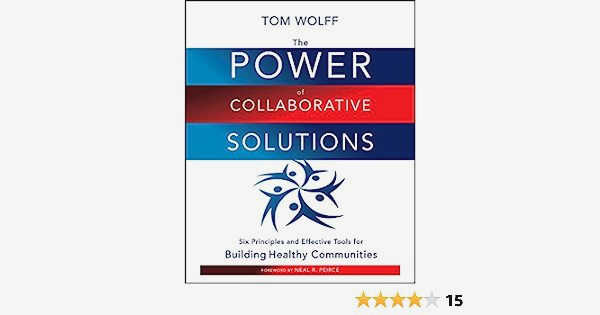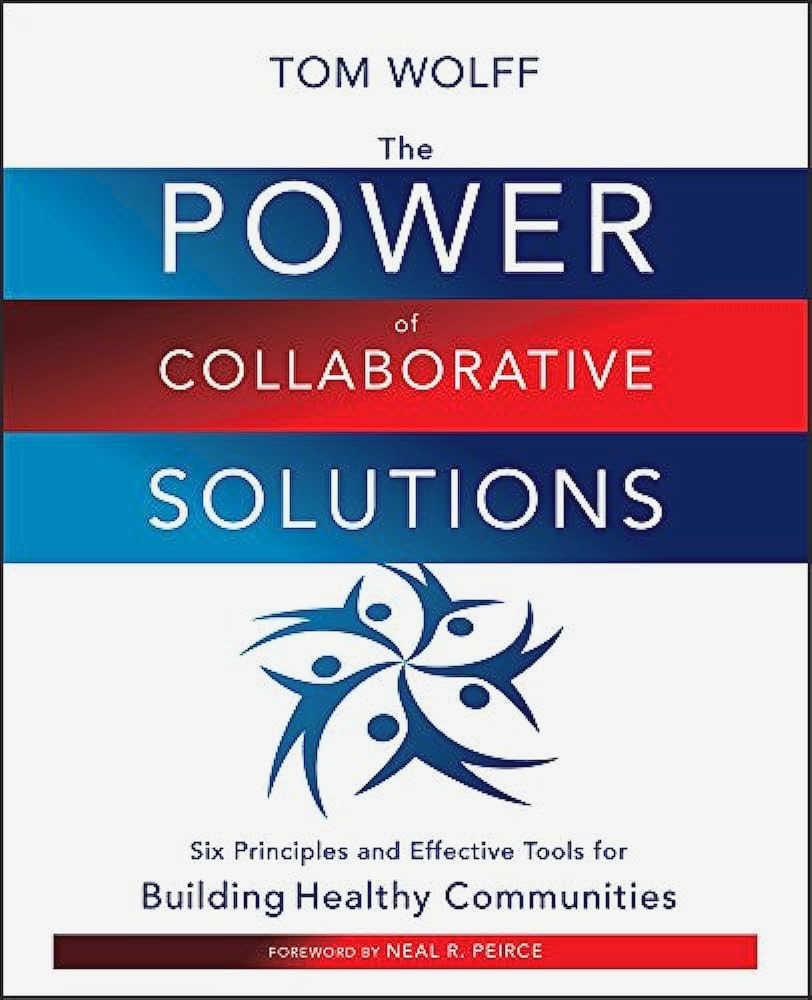In today’s rapidly changing world, there is an increasing recognition of the need for collaborative solutions to address the complex challenges facing communities. One key resource that is often underutilized in community development is the power of civil society. Civil society, which includes non-governmental organizations, community groups, and individuals, can play a critical role in driving positive change and sustainable development.
Collaborative solutions bring together diverse stakeholders, including government, businesses, and civil society organizations, to collectively address community needs. This collaborative approach recognizes that no single actor has all the answers and that collective efforts are required to tackle complex problems. Civil society organizations, in particular, bring unique perspectives, expertise, and resources to the table, making them valuable partners in community development.
Unleashing the power of civil society involves empowering these organizations and individuals to actively engage in the development process. This can be done by providing them with the necessary resources, such as funding and technical assistance, to implement initiatives and projects that address community needs. Additionally, capacity building and training programs can help strengthen the skills and capabilities of civil society actors, enabling them to effectively contribute to community development efforts.
Civil society organizations also have the ability to mobilize community members and foster a sense of ownership and participation. By engaging individuals in decision-making processes and encouraging their active involvement, civil society organizations can harness the collective wisdom and energy of communities, resulting in more sustainable and inclusive development outcomes.
In conclusion, leveraging the power of civil society is essential to unlocking the full potential of community development. Collaborative solutions that bring together diverse stakeholders, including civil society organizations, are crucial in addressing the complex challenges facing communities. By empowering and engaging civil society actors, we can tap into their unique perspectives, expertise, and resources to drive positive change and build stronger, more sustainable communities.
Promoting Local Engagement and Participation
One of the key elements of successful community development is promoting local engagement and participation. In order to address the specific needs of a community, it is essential to involve and empower the local residents.
Engaging the local community can take many forms, such as organizing town hall meetings, conducting surveys, or establishing community task forces. These initiatives provide a platform for residents to voice their concerns, discuss potential solutions, and actively participate in decision-making processes.
Local engagement and participation not only ensure that community development efforts are aligned with the actual needs of the residents, but also fosters a sense of ownership and pride within the community. When people are involved in shaping their own neighborhood or town, they are more likely to be committed to its success and actively contribute to its well-being.
Effective strategies for promoting local engagement and participation include:
- Building trust and fostering open communication: It is important to establish trust between community members and development organizations. This can be achieved through transparency, active listening, and regular communication.
- Providing accessible platforms for participation: Ensuring that community members have access to information and opportunities for engagement is crucial. This can be done through online forums, community centers, or regular community meetings.
- Empowering local leaders: Identifying and supporting local leaders within the community can help to drive engagement and participation. These leaders can act as advocates for the community’s interests and mobilize others to get involved.
- Creating opportunities for skill-building: Offering workshops, trainings, and mentorship programs can empower community members to take an active role in community development. This not only enhances their capabilities but also encourages a sense of ownership and pride in their contributions.
In summary, promoting local engagement and participation is essential for successful community development. By involving and empowering community members, development efforts are more likely to be aligned with the actual needs of the residents and benefit the community in the long term.
Strengthening Grassroots Organizations
Grassroots organizations play a crucial role in community development, as they are directly connected to the needs and aspirations of the local population. These organizations often emerge from within the community itself, driven by the desire to address specific issues and create positive change. However, it is important to recognize that grassroots organizations face numerous challenges that can hinder their effectiveness.
1. Building Capacity: To strengthen grassroots organizations, it is essential to invest in capacity-building initiatives. This involves providing training, mentoring, and resources to help these organizations develop their skills and knowledge. By enhancing their capacity, grassroots organizations can better navigate complex social, economic, and political landscapes, and effectively address the needs of their community. Funding agencies and civil society networks play a key role in supporting capacity-building efforts.
2. Creating Networks: Collaborative networks are instrumental in strengthening grassroots organizations. By connecting with other organizations and stakeholders, grassroots organizations can share best practices, exchange knowledge, and build alliances. These networks provide opportunities for collective action, allowing grassroots organizations to amplify their impact and influence policy-making processes. Online platforms, conferences, and workshops can facilitate networking among grassroots organizations.
3. Promoting Sustainability: Sustainable funding mechanisms are essential for the long-term viability of grassroots organizations. Many grassroots organizations struggle to secure consistent funding, relying heavily on donations or project-based grants. To strengthen these organizations, it is important to explore innovative financing models such as social enterprise initiatives or public-private partnerships. This would enable grassroots organizations to diversify their revenue streams and become more financially sustainable.
4. Advocacy and Awareness: Grassroots organizations often face challenges in making their voices heard and raising awareness about the issues they are addressing. Advocacy plays a crucial role in empowering grassroots organizations to advocate for policy changes, mobilize resources, and engage with decision-makers. By building strategic partnerships and leveraging social media platforms, grassroots organizations can amplify their message and garner support from a wider audience.
5. Monitoring and Evaluation: Regular monitoring and evaluation are vital to assess the impact of grassroots organizations and ensure accountability. By collecting data and analyzing outcomes, these organizations can track their progress, identify areas for improvement, and demonstrate their effectiveness to funders and stakeholders. Monitoring and evaluation systems should be participatory in nature, involving the local community in the assessment process.
In conclusion, strengthening grassroots organizations requires a multi-dimensional approach that includes capacity-building, networking, sustainable financing, advocacy, and monitoring. By investing in these areas, we can unleash the power of grassroots organizations and foster inclusive community development.
Fostering Collaboration between Government and Civil Society
Effective collaboration between government and civil society is essential for successful community development. While government plays a critical role in providing resources and implementing policies, civil society brings grassroots knowledge, innovation, and community-driven solutions. By fostering collaboration between these two sectors, we can create more sustainable and inclusive development outcomes.
Building Trust and Communication
Building trust and open lines of communication are key to fostering collaboration between government and civil society. Government officials need to actively engage with civil society organizations (CSOs) and community leaders, seeking their input and involving them in decision-making processes. Regular meetings, consultations, and joint planning sessions can help bridge the gap between the two sectors and ensure that the needs and concerns of the community are addressed.
Sharing Resources and Expertise
Collaboration between government and civil society can lead to the sharing of resources and expertise. Governments can provide funding, infrastructure, and technical support to CSOs, enabling them to scale up their initiatives and reach more communities. Similarly, civil society organizations can contribute their knowledge, networks, and community organizing skills to support government efforts. By pooling resources and expertise, both sectors can achieve more impactful and sustainable development outcomes.
Promoting Policy Coherence and Implementation
Collaboration between government and civil society can help ensure policy coherence and effective implementation. Civil society organizations can play a crucial role in advocating for policies that address the needs of marginalized communities and hold governments accountable for their commitments. Through dialogue and collaboration, government can gain a better understanding of the realities on the ground and make informed policy decisions. This collaborative approach can lead to more inclusive and equitable development policies and programs.
Monitoring and Evaluation
Collaboration between government and civil society is also important in monitoring and evaluating the impact of development initiatives. Civil society organizations can provide valuable on-the-ground insight and data, helping to assess the effectiveness and sustainability of government programs. By involving civil society in the monitoring and evaluation process, governments can gain a better understanding of the challenges and opportunities, and adjust their strategies accordingly. This collaborative approach can lead to more evidence-based decision-making and continuous improvement in community development efforts.
In conclusion, fostering collaboration between government and civil society is crucial for effective community development. By building trust, sharing resources, promoting policy coherence, and involving civil society in monitoring and evaluation, we can harness the power of both sectors to create more sustainable and inclusive communities.
Empowering Marginalized Communities
In order to create inclusive and sustainable communities, it is essential to empower marginalized communities. These communities often face significant social, economic, and political barriers that limit their access to resources and opportunities. Empowerment allows them to overcome these barriers and actively participate in decision-making processes that affect their lives.
Identifying and addressing the needs of marginalized communities is a crucial first step in the empowerment process. It requires a comprehensive understanding of their unique challenges and goals. This can be achieved through conducting thorough needs assessments, engaging in dialogue with community members, and collaborating with relevant stakeholders.
Providing access to education and skills training is another important aspect of empowering marginalized communities. Quality education equips individuals with the knowledge and skills they need to improve their livelihoods and contribute to the development of their communities. Skills training programs can also help individuals gain marketable skills and increase their employability.
Ensuring equal access to healthcare is vital for the well-being and empowerment of marginalized communities. Lack of access to healthcare services can have severe consequences on individuals’ health and quality of life. Efforts should be made to improve healthcare infrastructure, increase awareness about available services, and reduce financial barriers to healthcare.
Promoting economic empowerment is crucial for breaking the cycle of poverty in marginalized communities. This can be achieved through various means, such as providing microfinance opportunities, promoting entrepreneurship, and supporting the development of local businesses. By enabling individuals to generate their own income, economic empowerment not only improves their living standards but also enhances their sense of self-worth and agency.
Fostering social inclusion and cohesion is another key aspect of empowering marginalized communities. It requires creating an environment where individuals from all backgrounds feel valued, respected, and included. This can be achieved through promoting diversity and equity, encouraging community participation, and addressing stigma and discrimination.
Enhancing Social Entrepreneurship
Social entrepreneurship, also known as mission-driven or impact entrepreneurship, refers to the practice of creating and managing businesses that have a social or environmental mission at their core. It involves using entrepreneurial skills and principles to create innovative solutions to social problems. Social entrepreneurs combine their business acumen with their passion for creating positive change to develop sustainable and scalable solutions.
By enhancing social entrepreneurship, communities can benefit from the innovative ideas and solutions that these entrepreneurs bring. One way to enhance social entrepreneurship is by providing support and resources to aspiring social entrepreneurs. This can include access to mentorship programs, networking opportunities, and funding sources specifically tailored to social ventures.

Collaboration is another key aspect of enhancing social entrepreneurship. By fostering collaboration between social entrepreneurs, government agencies, nonprofit organizations, and other stakeholders, communities can create a more supportive ecosystem for social ventures to thrive. Collaborative initiatives can include shared workspaces, co-creation programs, and knowledge-sharing platforms.
Furthermore, policy changes can also play a significant role in enhancing social entrepreneurship. Governments can create policies that encourage and incentivize social entrepreneurship, such as tax incentives for businesses that have a positive social or environmental impact. Additionally, governments can provide easier access to government contracts for social enterprises, creating opportunities for social entrepreneurs to scale up their solutions.
Overall, enhancing social entrepreneurship is crucial for fostering community development. By supporting and empowering social entrepreneurs, communities can benefit from their innovative ideas and solutions, creating positive social and environmental change.
Supporting Sustainable Development Initiatives
Sustainable development initiatives are crucial for addressing social, economic, and environmental challenges and creating long-term solutions. Collaborative efforts between civil society organizations, government agencies, and community stakeholders play a vital role in supporting and driving these initiatives forward.
Engaging Civil Society
Civil society organizations are essential partners in supporting sustainable development initiatives. Their expertise, advocacy skills, and community networks can help mobilize resources, raise awareness, and drive positive change. These organizations can provide valuable insights and feedback, ensuring that initiatives are aligned with local needs and priorities.
Building Partnerships
Effective collaboration between civil society, government agencies, and other stakeholders is crucial for the success of sustainable development initiatives. By pooling their expertise, resources, and networks, these partners can leverage their collective strengths to tackle complex challenges. Building strong partnerships can also enhance coordination, foster innovation, and increase the scalability of initiatives.
Providing Capacity-building Support
Supporting sustainable development initiatives requires building the capacity of civil society organizations and community stakeholders. Capacity-building programs can provide training, knowledge sharing, and technical assistance to enhance their skills and capabilities. By equipping these organizations and individuals with the necessary tools and resources, they can effectively contribute to the implementation and long-term sustainability of initiatives.
Mobilizing Resources
Sustainable development initiatives often require financial and non-financial resources. Civil society organizations can play a crucial role in mobilizing resources by forging partnerships with donors, philanthropic organizations, and private sector entities. These organizations can also coordinate fundraising campaigns, develop grant proposals, and advocate for increased investment in sustainable development.
Ensuring Accountability and Monitoring
Ensuring accountability and monitoring the progress of sustainable development initiatives is essential for their success. Civil society organizations can contribute by advocating for transparency, conducting independent evaluations, and holding all stakeholders accountable for their commitments. Through regular monitoring and reporting, these organizations can help identify challenges, measure impact, and make informed decisions to improve the effectiveness of initiatives.
In conclusion, supporting sustainable development initiatives requires collaborative efforts between civil society organizations and other stakeholders. By engaging civil society, building partnerships, providing capacity-building support, mobilizing resources, and ensuring accountability, these initiatives can drive positive change and contribute to the well-being of communities and the environment.
Mobilizing Resources for Community Projects
In order to successfully implement community projects, it is essential to mobilize resources effectively. Mobilizing resources involves gathering and utilizing the necessary financial, human, and material assets to support the development initiatives.
One way to mobilize resources is through partnership and collaboration with various stakeholders, such as government agencies, non-profit organizations, and businesses. These partnerships can help access funding, expertise, and networks necessary for the success of the project. By forging alliances with different organizations, community projects can tap into a wider pool of resources and maximize their impact.
Another strategy for mobilizing resources is community-based fundraising. This can involve organizing events, such as charity galas or community fairs, where individuals and businesses can contribute financially. Additionally, crowdfunding platforms can be utilized to reach a broader audience and attract donations from people who are passionate about the cause. Creating a compelling narrative and clearly communicating the project’s goals and impact can help inspire individuals to contribute their resources.
Furthermore, mobilizing resources can also involve leveraging volunteers and their skills. Volunteerism plays a crucial role in community development, as it provides manpower and expertise without the need for significant financial investment. Engaging volunteers in various project activities, such as construction, teaching, or mentoring, not only helps in resource mobilization but also fosters a sense of ownership and empowerment within the community.
Lastly, effective resource mobilization requires careful planning and monitoring. A comprehensive resource mobilization plan should be developed, outlining the objectives, strategies, and timeline for gathering and utilizing resources. Regular monitoring and evaluation of resource utilization ensure transparency and accountability, allowing for adjustments and improvements if needed.
In conclusion, mobilizing resources is a vital component of community projects. Through partnerships, fundraising, volunteer engagement, and strategic planning, communities can harness the power of available resources to drive impactful initiatives for their development and well-being.
Advocating for Policy Change
When it comes to community development, advocating for policy change plays a vital role in shaping the direction and focus of the development process. Policy change can help address systemic issues and create lasting impact on the well-being of a community.
Collaborative partnerships between civil society organizations, grassroots movements, and government officials are crucial in advocating for policy change. By working together, these groups can leverage their combined expertise and influence to bring about meaningful changes in laws, regulations, and programs.
Key Strategies for Advocacy
Advocating for policy change requires strategic planning and well-coordinated efforts. Some key strategies that can be employed include:
- Research and Data Analysis: Gathering relevant data and conducting thorough research is essential in building a strong case for policy change. By presenting evidence-based arguments, advocates can demonstrate the need for change and its potential impact.
- Public Awareness Campaigns: Raising public awareness about the policy issue can help generate support, mobilize communities, and put pressure on decision-makers to take action. This can be done through various channels, such as media campaigns, community events, and social media outreach.
- Engagement with Stakeholders: Engaging with stakeholders, including policymakers, community members, and other relevant organizations, is crucial in building alliances and support for the policy change. This can involve organizing meetings, workshops, and consultations to gather input and feedback.
- Advocacy Training and Capacity Building: Providing training and capacity building opportunities to advocates can empower them with the necessary skills and knowledge to effectively advocate for policy change. This can include workshops on lobbying, public speaking, and policy analysis.
The Impact of Advocacy
Advocacy for policy change can have a significant impact on community development. It can lead to improved access to services, increased funding for social programs, and the implementation of laws and policies that promote equality and justice.

Moreover, when civil society organizations and community members are actively involved in advocating for policy change, it can strengthen democracy and promote civic engagement. By raising their voices and working together, they can create a more inclusive and participatory decision-making process.
In conclusion, advocating for policy change is a powerful tool for driving community development. It requires collaboration, strategic planning, and engagement with stakeholders. By advocating for policy change, civil society can shape the future of their communities and ensure a better quality of life for all.
Addressing Social and Environmental Challenges
Collaborative solutions play a crucial role in addressing social and environmental challenges. By bringing together different stakeholders, such as civil society organizations, government agencies, and community members, we can work towards finding sustainable solutions that benefit both people and the planet.
Social challenges, such as poverty, inequality, and access to basic services, require collaborative efforts to find long-term solutions. Civil society organizations can play a key role in advocating for the rights of marginalized groups, providing essential services, and promoting social inclusion. By working together with government agencies, we can develop comprehensive policies and programs that address these challenges effectively.
Environmental challenges, such as climate change and deforestation, require collective action to mitigate their impact. Collaborative solutions can involve initiatives such as promoting sustainable practices, raising awareness about environmental issues, and advocating for policy changes. By engaging with community members, we can empower them to take action and create positive environmental change in their local area.
The power of civil society in addressing social and environmental challenges lies in its ability to mobilize resources, knowledge, and expertise. Civil society organizations often have a deep understanding of local contexts, which enables them to design targeted interventions that address the specific needs of communities. Through partnership and collaboration, we can harness the collective power of civil society to drive meaningful change and create a more inclusive and sustainable future.
Building Resilient and Inclusive Communities
Building resilient and inclusive communities is essential for sustainable development and ensuring the well-being of all community members. It requires a collective effort and collaboration between civil society organizations, government entities, and community members themselves.
Resilience is the ability of a community to withstand and recover from shocks, such as natural disasters, economic downturns, or social unrest. This can be achieved by implementing disaster preparedness plans, investing in infrastructure that can withstand extreme weather events, and providing social support systems for those affected.
Inclusivity is about ensuring that all community members have equal access to resources, services, and opportunities, regardless of their background or circumstances. It involves creating an environment where diversity is celebrated and actively promoted, and where everyone’s voices are heard and valued.
To build resilient and inclusive communities, it is important to engage all stakeholders in the decision-making process. This includes involving community members in the planning and implementation of development initiatives, as well as establishing partnerships between civil society organizations, government agencies, and the private sector.
Education plays a crucial role in building resilient and inclusive communities. By providing access to quality education for all community members, regardless of their socio-economic status or background, we can empower individuals and equip them with the skills and knowledge needed to thrive in an ever-changing world.

Another important aspect of building resilient and inclusive communities is social protection. This involves establishing systems that provide a safety net for the most vulnerable members of society, such as the elderly, people with disabilities, or those living in poverty. This can include access to healthcare, social assistance programs, and job training opportunities.

In conclusion, building resilient and inclusive communities requires a holistic approach that addresses the various social, economic, and environmental challenges faced by communities. By working together and leveraging the power of civil society, we can create a more sustainable and equitable future for all.





